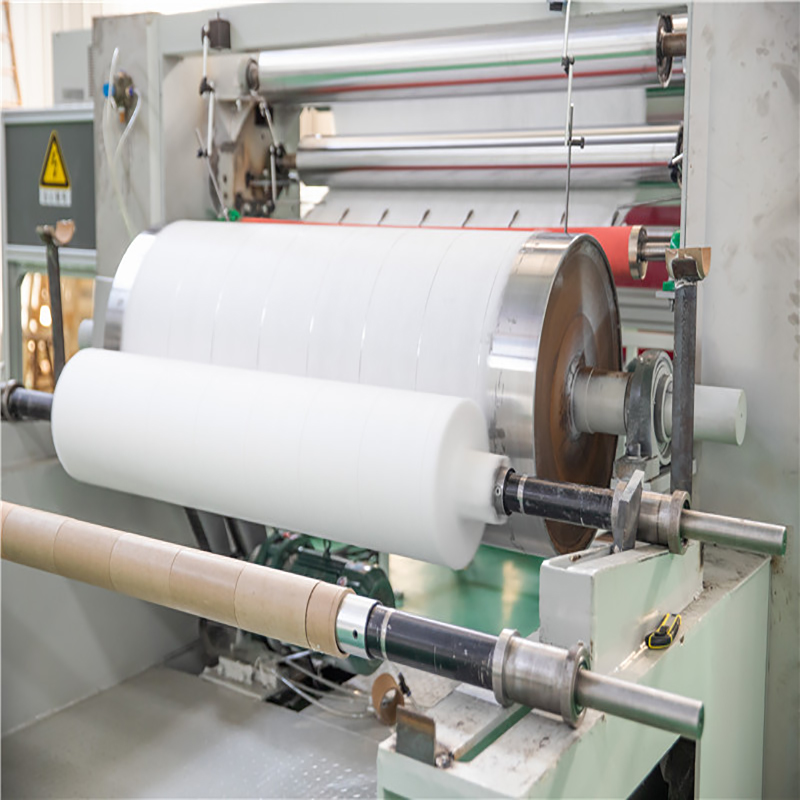PÁGINAS (polipropileno) tela no tejida hilada Es ampliamente utilizado en aplicaciones como toallitas., productos de higiene, Medios de filtración y geotextiles debido a su resistencia., absorbencia y transpirabilidad. Las máquinas PP spunbond fabrican esta tela no tejida mediante un proceso que “giros” Filamentos de PP y luego los une mediante calor., punzonado con aguja o adhesivo. A continuación se detallan cómo funcionan estas máquinas y sus características.:

¿Qué es una máquina para fabricar telas PP Spunbond??
Una máquina para fabricar tejidos PP spunbond utiliza gránulos de PP derretidos como material de entrada. El PP fundido se extruye a través de pequeñas hileras en muchos filamentos finos.. A medida que los filamentos salen de las hileras, un flujo de aire caliente los atenúa y los extrae hasta alcanzar la finura deseada. Luego, los filamentos se depositan de forma aleatoria en una cinta colectora para formar una red..
Luego, la red no tejida pasa por un proceso de unión para fusionar los filamentos de PP.. Esto se puede hacer usando:
- Unión térmica – Las cuchillas de aire caliente o la radiación infrarroja unen los filamentos suavizando el PP con calor..
- Unión mecánica – La perforación con aguja enreda los filamentos para lograr la unión..
- Enlace químico – Se rocían adhesivos sobre la red para unir los filamentos..
La red no tejida unida se enrolla en un carrete y luego se fija con calor para estabilizar sus propiedades.. El resultado final es un rollo continuo de tela no tejida hilada de PP..
Componentes clave de las líneas PP Spunbond
Las partes principales de una línea de PP spunbond incluyen:
- extrusora – Derrite y bombea el PP a las hileras..
- Hileras – Contiene miles de pequeños agujeros que extruyen los filamentos..
- Suministro de aire – Sopla chorros de aire para dibujar y atenuar los filamentos..
- Cinta transportadora – Recoge los filamentos depositados aleatoriamente para formar una red no tejida..
- Unidad de unión térmica/mecánica/química – Fusiona los filamentos de la red..
- Unidad de postratamiento – Incluye bobinado, Equipos de corte y termofijación..
Los fabricantes ofrecen máquinas para fabricar PP spunbond con diferentes anchos de línea, velocidades de producción, Número de hileras y tipos de unión para producir una gama de propiedades no tejidas para diferentes aplicaciones..
Características a considerar Máquina para fabricar telas PP Spunbond
Al seleccionar una máquina para fabricar tejidos PP spunbond, Los factores a evaluar incluyen:
- Velocidad de línea – Las velocidades más altas proporcionan un mayor rendimiento pero requieren componentes más sofisticados.
- Ancho de línea – Las líneas más anchas producen anchos más grandes de tela no tejida en una sola pasada.
- Finura del filamento – Los filamentos más finos producen, Tejidos más suaves con gramajes más bajos..
- Rendimiento – La velocidad de la máquina para transformar pellets de PP en un rollo de tela no tejida.
- Uniformidad – Incluso la deposición y unión de filamentos producen propiedades no tejidas consistentes..
- Eficiencia operativa – Factores como el consumo de energía., generación de residuos y tiempo de actividad.
- Opciones de materiales – Algunas líneas pueden procesar PP reciclado y otros polímeros.
